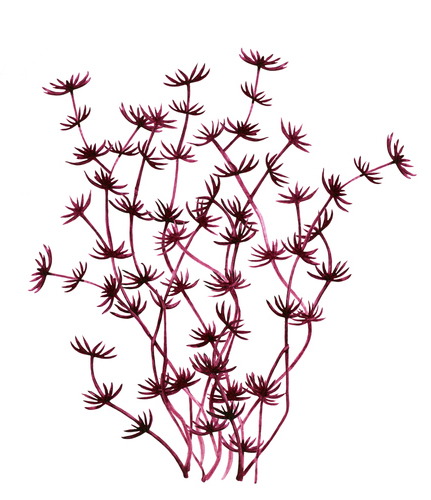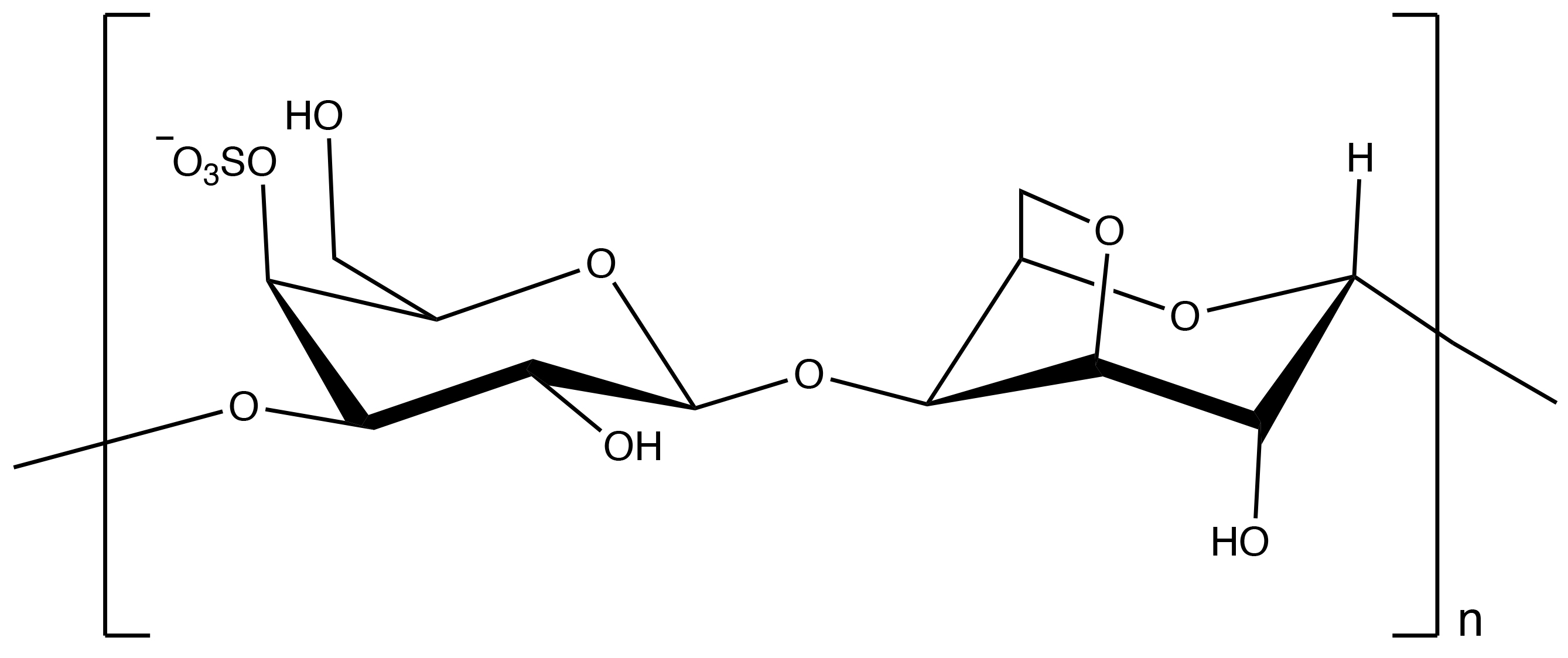

by The Cosmetic Chemist Staff
October 10, 2022

Carrageenans are a family of sulfated polysaccharides extracted from red seaweed (Rhodophyceae). The molecular structure of one of the most common carrageenans, kappa-carrageenan, is provided in Figure 1. The carrageenans are characterized by the number and position of sulfate groups attached to the polysaccharide backbone and categorized as kappa, iota, alpha, and beta carrageenans. They are composed of alternating (1-3)-linked beta-D-galactose and (1-4)-linked alpha-D-galactose residues in which the alpha-D-galactose residues contain one to three sulfate moieties depending on the type of carrageenan.1 In general, the carrageenans range in molecular weight from 400 – 600 kDa, although this can reach as low 100 kDa.

Figure 1: Molecular structure of kappa-carrageenan.
Carrageenans are used in cosmetics for their thickening, gelling, stabilizing, and water binding properties.2 The extracts of red seaweed are usually chock-full of minerals and vitamins, which might be one of the reasons carrageenans are so popular in food products. Several studies have demonstrated the utility of carrageenans in cosmetic applications.3-5 While they are mostly used for their aesthetic and rheological properties, more recent studies have demonstrated the bioactivity of seaweed extracts and their potential use as wound healing and even hair growth agents.6
References
1. T. Thành, Y. Yuguchi, M. Mimura, H. Yasunaga, R. Takano, H. Urakawa, and K. Kajiwara, Preparation of novel carrageenans and their dilute solution properties, Macromol. Chem. Phys., 203(1), 15-23 (2002); https://doi.org/10.1002/1521-3935(20020101)203:1<15::AID-MACP15>3.0.CO;2-1.
2. M. Shafie, M. Kamal, F. Zulkiflee, S. Hasan, N. Uyup, S. Abdullah, N. Hussin, Y. Tan, and Z. Zafarina, Application of carrageenan extract from red seaweed (Rhodophyta) in cosmetic products: A review, J. Ind. Chem. Soc., 99, 100613 (2022); https://doi.org/10.1016/j.jics.2022.100613.
3. S. Maddukuri, L. Devi, S. Metta, and K. Krishna, Development of niacinamide and calendula oil anti-acne gel using carrageenans as gelling agents, Allied J. Med. Res., 5(2), 1-29 (2021).
4. L. Pereira, Seaweeds as source of bioactive substances and skin care therapy—cosmeceuticals, algotherapy, and thalassotherapy, Cosmetics, 5, 68 (2018); https://doi.org/10.3390/cosmetics5040068.
5. C. Valenta and K. Schultz, Influence of carrageenan on the rheology and skin permeation of microemulsion formulations, J. Control. Release, 95(2), 257-265 (2004); https://doi.org/10.1016/j.jconrel.2003.11.020.
6. S. Fard, F. Shamsabadi, M. Emadi, G. Meng, K. Muhammad, and S. Mohamed, Ethanolic extract of Eucheuma cottonii promotes in vivo hair growth and wound healing, J. Animal Vet. Adv., 10(5), 601-605 (2011); http://dx.doi.org/10.3923/javaa.2011.601.605.